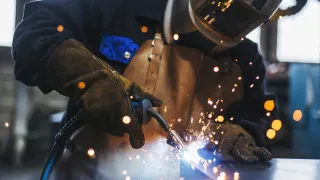

Emission testing of materials
The testing can be used for purposes such as assessing the impact of material emissions on the chemical quality of indoor air.
There are three methods for studying building material emissions
There are three different methods for investigating the emissions of building materials.
Both bulk emission and FLEC are well-established as methods for solving indoor air problems, and you can find more information about them on our Indoor air laboratory analysis page.
The least known of the three is a surface emission study with a chamber. The chamber technique, conducted under standardised conditions and based on the ISO 16000-9 and SFS-EN 16516 standards, provides reliable information on building materials’ emissions.
The chamber technique also enables assessment of the impact of material emissions on the chemical quality of indoor air, as the result includes a model room concentration in addition to the surface emission rate.
Compare methods
You can compare the advantages and drawbacks of the various material emission research methods.
Legend: + = good +/– = moderate – = poor
Property \ Method |
Bulk emission |
FLEC |
Chamber |
| price of the analysis | + | +/‒ | ‒ |
| flexibility of measurement timetables | + | +/‒ | ‒ |
| ease of sampling | + | ‒ | +/‒ |
| integrity of sampling | +/‒ | + | ‒ |
| ease of interpretation of results | ‒ | +/‒ | + |
| comparability of results | ‒ | +/‒ | + |
| result usable for indoor air quality assessment (i.e. convertible to model room concentration) | ‒ | +/‒ | + |
All three techniques can be used to analyse samples such as volatile organic compounds (VOC), formaldehyde and other aldehydes, and ammonia.
The material emission service can help you in product development, quality control, and solving indoor air problems
Our material emission services can be customised, for example:
- to support product development process
- as part of material manufacturers’ quality control
- to support indoor air analysis in identifying problematic materials
Our other related laboratory services:
- testing services for emissions generated during the manufacturing process and thermal decomposition products
- dustiness testing of materials in accordance with SFS-EN 15051-2
Ask our experts

Evgeny Parshintsev




